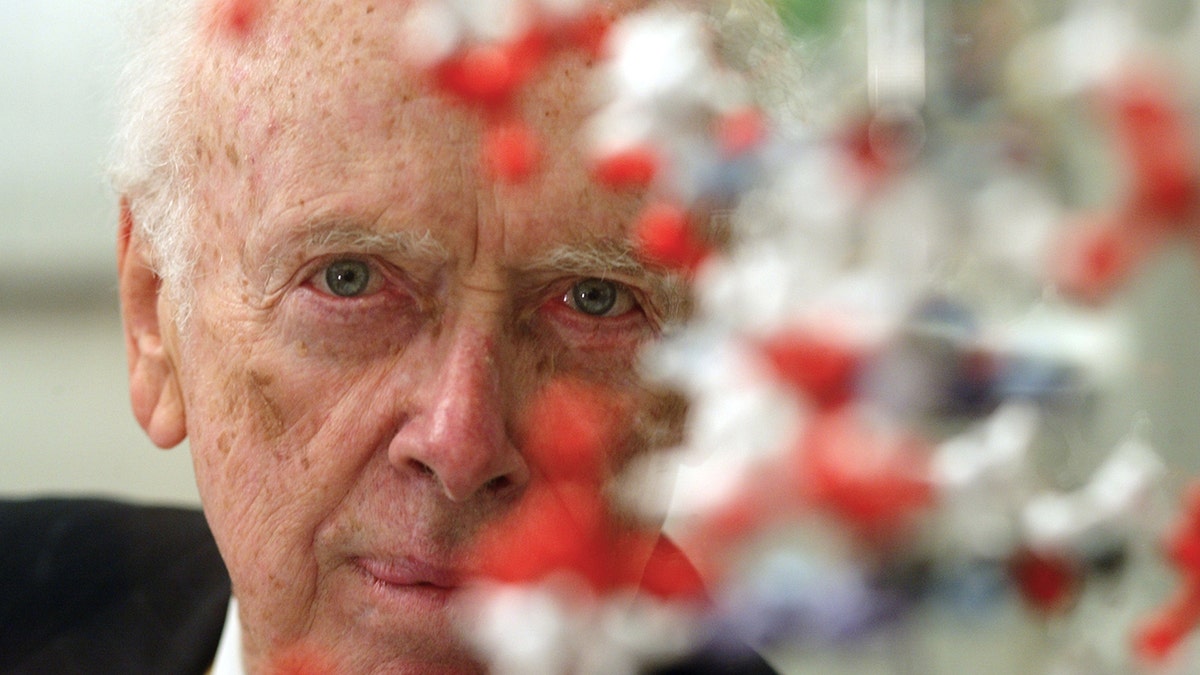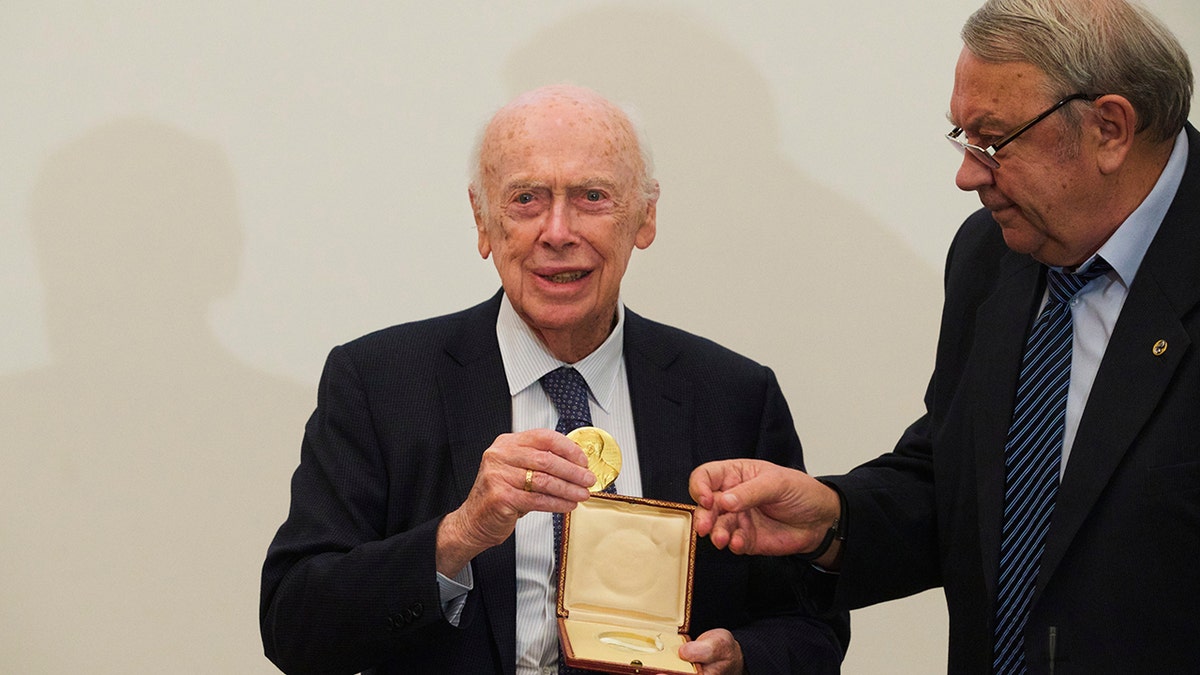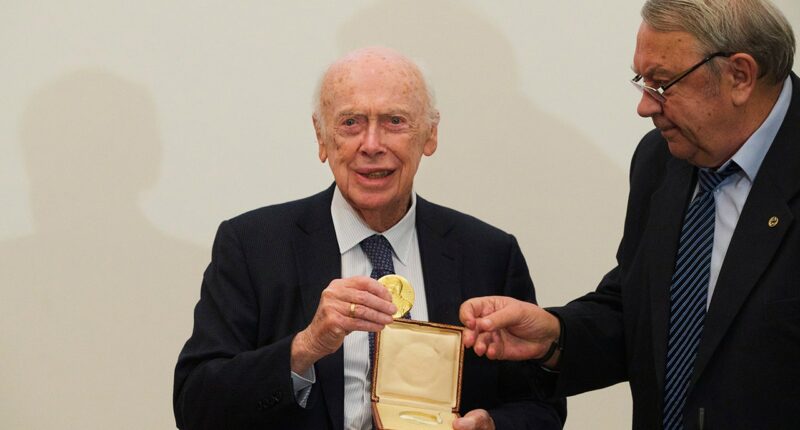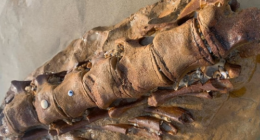Share this @internewscast.com
James Watson, renowned for his role in unveiling the double-helix structure of DNA in 1953, has passed away at the age of 97.
Originally from Chicago, Watson achieved this monumental scientific breakthrough at the tender age of 24, working alongside British physicist Francis Crick. His passing was confirmed by his son, following a brief illness, while he was in hospice care, according to reports from the Associated Press on Friday.
Cold Spring Harbor Laboratory, where Watson previously conducted research, paid tribute to his legacy. “As a scientist, the determination of DNA’s structure by him and Francis Crick, using data from Rosalind Franklin, Maurice Wilkins, and colleagues at King’s College London, marked a pivotal advancement in life sciences,” the institution stated on Friday.

In 2004, James Watson, the American biologist who shared a Nobel Prize for the groundbreaking discovery of DNA’s double-helix form, posed for a portrait at an exhibition in Berlin. (Photo by Markus Schreiber/AP)
The New York Times reported that Watson’s death occurred earlier this week on Long Island.
In recognition of their groundbreaking work, Watson, alongside Francis Crick and Maurice Wilkins, was awarded the Nobel Prize in 1962 for revealing the double-helix structure of DNA, a configuration resembling a twisted ladder, as reported by the Associated Press.

James Watson, left, is pictured next to Francis Crick, right, in 1959. (Getty Images)
“Francis Crick and I made the discovery of the century, that was pretty clear,” Watson once said.
The discovery revealed how genetic information is stored and replicated, and created the foundation for modern genetic engineering, disease treatment with genes and DNA identification techniques, according to the Associated Press.
In the years that followed the discovery, Watson authored books including “The Double Helix” in 1968 and “Molecular Biology of the Gene” in 1965.

President of the Russian Academy of Sciences Vladimir Fortov, right, returns a Nobel Prize medal which was sold at auction to a Russian businessman, to U.S. Nobel laureate, biologist James Watson in the Russian Academy of Sciences, in Moscow, Russia, Wednesday, June 17, 2015. (AP Photo/Ivan Sekretarev)
However, later in life, he also drew widespread condemnation for racist remarks.
“His remarks on race and IQ in 2008 led the CSHL Board of Trustees to remove him from all administrative roles and his appointment as a CSHL Trustee,” Cold Spring Harbor Laboratory wrote. “When he made similar statements in 2020, the board revoked his Emeritus status and severed all connections with him.”
Crick and Wilkins both died in 2004, according to the Associated Press.















